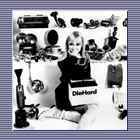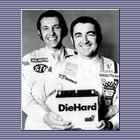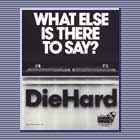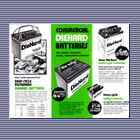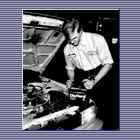|
It took nine years of intense research and more than 1
million dollars for Sears to develop a revolutionary new
automobile battery, the DieHard. Sears designed the DieHard to
produce 35 percent more usable starting power than other similar
batteries.
The new design, introduced in 1967, included a revolutionary
tough, thin-walled case of translucent polypropylene plastic, 50
percent thinner than conventional black rubber-type battery
enclosures. The extra room meant bigger plates and more acid, which
provided extra starting power. In addition to the
space-saving and visibility advantages, the polypropylene case
was stronger.
The development of tools to manufacture the clear plastic
container was a major undertaking. That project alone took some
of the country’s finest toolmakers more than a year and a half
to build. The machines they developed represented a substantial
advance in precision ejection-molding. The first, mammoth
ejection molding press for the DieHard weighed 600 tons and
required 500 metric tons to clamp shut. By itself, the mold for
the container weighed four and a half tons.
The name DieHard came about after the battery underwent
intensive testing without failure. Technicians did not report a
single failure in more than 26,000 starts at temperatures
ranging from sub-zero to more than 100 degrees. Sears
marketed DieHard through a series of innovative
advertisements ranging from batteries frozen in ice, to
batteries in Baja racecars.
In the 1990s, the DieHard brand expanded to include
flashlights, flashlight batteries, rechargeable batteries, gel
cel batteries, and recently, work boots.
Today, Sears builds DieHard automobile batteries with a
variety of innovative features. These include batteries with
reserve starting power, batteries with anti-theft features, and
batteries designed for specific geographical regions.
Diehard today
Read some basic facts
about Diehard today or visit www.diehard.com for more information and to purchase products.
|


